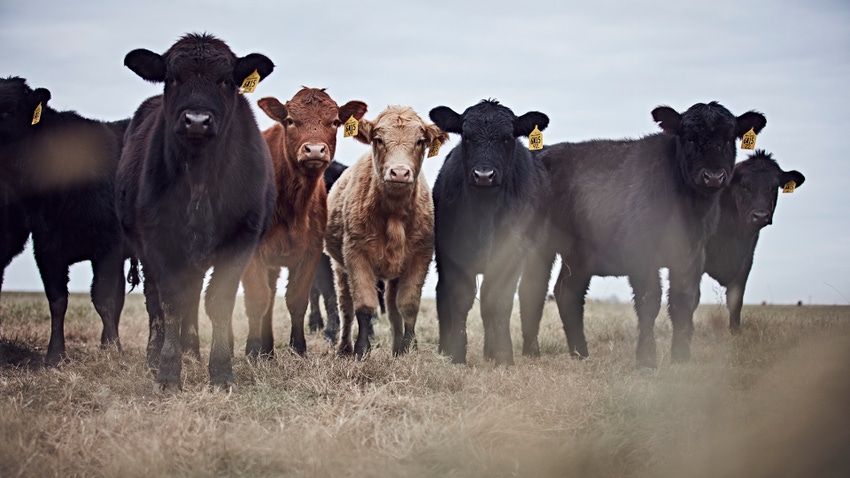Welcome to Health Ranch, where you can find information and resources to help you put the health and well-being of your cattle at the top of the priority list.
Speed of antibiotic action makes a difference
Thoughtfully choose an antibiotic that works quickly to help improve health outcomes after a BRD diagnosis.
December 1, 2023

Thoughtfully choose an antibiotic that works quickly to help improve health outcomes after a BRD diagnosis
With the value of cattle increasing rapidly in the last two years, the use of antibiotics to control and treat the most damaging disease1 out there — bovine respiratory disease (BRD) — seems to have increased.
The market may be driving this increased use, according to Nathan Meyer, DVM, PhD, Boehringer Ingelheim. “Due to lower supply, feedyards are buying lighter-weight, higher-risk animals to keep pens full, so I’ve seen a rapid rise in metaphylactic treatment,” he observed.
Metaphylaxis is the treatment of a group of animals that has either been identified as high risk to contract BRD, or after part of the group has been diagnosed.
Additionally, some lower-priced generic versions of branded products have become available. High-value cattle and lower-priced antibiotics also contribute to increased antibiotic use.
But protecting your animal assets isn�’t about pulling the first, or most convenient, or even cheapest product off the shelf. It’s about making a thoughtful choice to improve the health and well-being of the animals in your care.
Fast-acting antibiotic contributes to judicious use
“Studies on antimicrobial resistance are underway, but these products are still very efficacious when used judiciously,” encouraged Dr. Meyer. “One of the paths to judicious use is to review options with your veterinarian, and consider a fast-acting antibiotic that can reach the site of infection — in this case, the lungs — quickly.”

To slow or stop the growth of bovine respiratory disease pathogens, it’s important to use an antibiotic that reaches the site of infection — the lungs — quickly. Photo submitted by Boehringer Ingelheim
When an animal is infected with the pathogens associated with the BRD complex, those bacteria can replicate and multiply very quickly. If that antibiotic doesn’t reach the lungs fast, then those bacteria will continue to rapidly proliferate, causing long-term lung damage and decreased performance.
What happens at the site of infection
“I compare what’s happening in an infected lung to a battle,” Dr. Meyer said. “The frontline action is in the pulmonary epithelial lining fluid [PELF], which surrounds the lungs. That’s where the invading bacteria hang out, replicate and multiply.
“When we administer antibiotics, we’re taking troops to the front line,” he explained. “We’re bringing in those troops to fight the infection in the PELF, right where the battle is happening.”
Because the bacteria reproduce so quickly, it’s critical for an antibiotic to reach that battle site quickly to slow or stop their growth. One of the most significant bacterial pathogens associated with BRD — Mannheimia haemolytica — produces a leukotoxin that destroys white blood cells. The immune system is affected due to increased inflammation and the animal’s overreaction to fighting the infection, which results in major lung tissue damage.
“Prompt treatment is crucial,” affirmed Dr. Meyer. “We need to decrease the amount of bacteria, decrease leukotoxin production, and minimize the inflammation to help prevent permanent damage and improve the animal’s health outcome.”
If the inflammation is too far along, fibrosis sets in, which is a chronic respiratory disease state. There is a long-term effect on the animal’s productivity, including poorer feed conversion rates and average daily gain. This is due to the lung capacity being compromised while the animal is still growing. The animal’s oxygen consumption needed for optimal metabolic functioning exceeds its capabilities. Decreased lung capacity also affects how an animal is able to handle stress, especially heat stress, as expiring, or breathing out, is the primary way it cools itself.
Use all the weapons to fight BRD
If not treated, BRD can result in heart failure. However, Dr. Meyer said that if affected animals are diagnosed early, and the antibiotic can get to work early in the stage of the disease, then there is a greater chance of any damage not being permanent.
“Antibiotics can reverse the course of the disease for better long-term outcomes,” he confirmed. “They are the most important weapon in our arsenal, and we want to closely monitor how we’re using them, so it’s best to work with your veterinarian on protocols that fit your operation.”
Solid recordkeeping is good ammunition as well. Assessing protocols includes knowing how many animals have been treated, what the outcomes were, number of mortalities, specific diagnoses and more.
“Most producers will not know those details from memory,” Dr. Meyer said. “It doesn’t have to be a fancy computer; it can be handwritten, as long as you keep track.”
Evaluating those records can then help determine if the treatment response was poor due to a misdiagnosis, for example.
“When early and proper diagnoses work together with a fast-acting antibiotic that is absorbed quickly and reaches those lungs promptly, producers can have success with BRD treatment,” concluded Meyer.
References:
1 Duff GC, Galyean ML. Board-invited review: recent advances in management of highly stressed, newly received feedlot cattle. J Anim Sci 2007;85(3):823–840. doi:10.2527/jas.2006-501.
©2023 Boehringer Ingelheim Animal Health USA Inc., Duluth, GA. All Rights Reserved. US-BOV-0388-2023
You May Also Like

